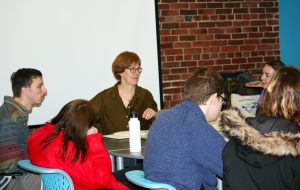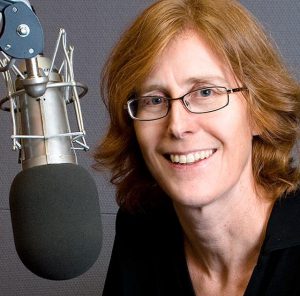

Reading and watching the daily news demands all—or at least most of—one’s attention. But attention spans are shrinking, leaving news not fully digested as other things vie for our screentime.
Enter audio. The intimacy of audio storytelling – piped right into your earbuds – is being heralded by many in journalism as a “high-touch, high-value” format. “You can listen in the shower while Alexa plays it for you, in the car on the radio, or on the train with your phone—wherever you please and across multiple devices,” argues graduate journalism student Melissa McNickles, ‘18.
McNickles is currently taking “Podcast and Radio Journalism,” taught by Jeb Sharp, editor and correspondent for Public Radio International‘s The World and two-time winner of the Lowell Thomas Award for best radio news or interpretation of international affairs. Sharp is teaching her students about the intricacies of putting together engaging audio pieces, including “writing for the ear,” which requires the use of compelling, easily understood words and syntax.
Students began the semester by producing three-minute “mini-profiles” of “everything from a youth worker to a yoga teacher, improv performer, gourmet ice cream purveyor, member of a Rocky Horror shadow cast, a Haymarket vendor,” Sharp said. Now, the class is covering issues like immigration, gentrification, #metoo, mass incarceration and pot legalization.
In the space of just a couple months, Sharp’s students are already seeing – and hearing – the potential for audio storytelling.
“A story that would make for a phenomenal print piece,” McNickles said, “may not translate well to radio. We’re learning how sound and voice can tell a story just as well as words— and sometimes even better.”


